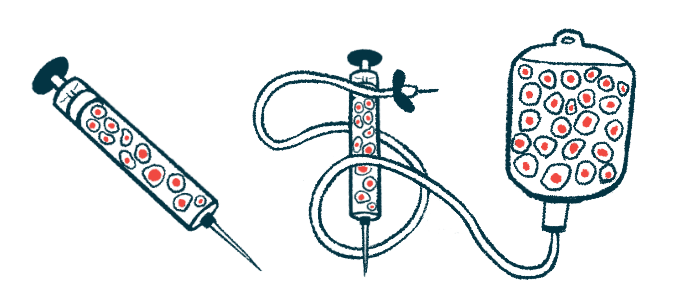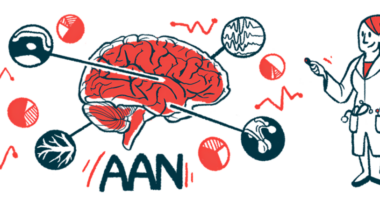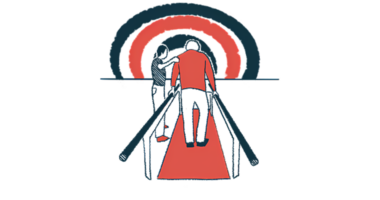Stem cell therapy highly effective in active RRMS: Real-world study
Nearly 80% of patients in Denmark free of relapses after 2 years

Nearly 80% of adults with highly active relapsing-remitting multiple sclerosis (RRMS) were free of relapses or confirmed disability worsening two years after receiving stem cell transplant, according to a real-world study in Denmark.
Moreover, more than two-thirds (69%) of these RRMS patients achieved a clinical outcome called NEDA-3, or no evidence of disease activity — defined as the absence of relapses, disability worsening, or new or enlarging lesions on MRI scans — after two years.
While stem cell therapy in MS often is associated with severe side effects, no patients died and the procedure was deemed safe. According to the researchers, these outcomes may be largely attributed to a careful selection of patients and the use of a less toxic chemotherapy regimen prior to the transplant.
“Our findings based on the study of 32 RRMS patients supports the growing volume of evidence indicating that [stem cell therapy] is an effective and safe treatment with few serious [adverse events] and no mortality,” the team concluded.
The study, “Autologous hematopoietic stem cell transplantation of patients with aggressive relapsing-remitting multiple sclerosis: Danish nation-wide experience,” was published in the journal Multiple Sclerosis and Related Disorders.
32 patients undergo transplant in Denmark over decade
Autologous hematopoietic stem cell transplant (aHSCT), more commonly called stem cell therapy, is an invasive procedure intended to reset the immune system and stop the inflammatory attack that drives MS.
The treatment first involves collecting hematopoietic stem cells — those that give rise to mature immune cells — from a patient’s blood. Then, after the entire immune system is wiped out with a chemotherapy or radiation therapy regimen, the stem cells are infused back into the same patient. When a patient’s own stem cells are used, the procedure is called autologous; donor stem cells also can be used for the procedure.
The goal of all stem cell therapy in MS is to repopulate the immune system with healthy cells that won’t attack the nervous system.
Studies indicate that the best outcomes after aHSCT occur in RRMS patients with highly active disease, characterized by multiple relapses and/or MRI activity, despite treatment with disease-modifying therapies.
In this report, researchers at the Danish Multiple Sclerosis Center (DMSC), in Copenhagen, described their experience with aHSCT for RRMS patients in Denmark with highly active disease.
A total of 32 patients underwent stem cell therapy at the center in the decade from May 2011 to May 2021. Seven received the chemotherapy conditioning BEAM/ATG, and had a median follow-up of 49 months, or just longer than four years.
The other 25 were treated with a less aggressive chemotherapy regimen, called CY/ATG, that’s associated with a lower risk of side effects than BEAM/ATG. These patients were followed for a median of 39 months, or a little longer than three years.
Compared with the BEAM/ATG patients, those receiving CY/ATG were significantly younger, had a shorter disease duration, and a lower annual relapse rate. They also had less disability, as assessed by the Expanded Disability Status Scale (EDSS), a commonly used measure in MS.
Slightly better results seen with chemotherapy regimen CY/ATG
In the whole group, 77% of patients did not have a relapse as of two years after aHSCT. The two-year relapse-free rate was higher in the CY/ATG group than the BEAM/ATG group (83% vs. 57%), but the difference was not statistically significant after adjusting for factors that affect prognosis — such as sex, age, disease duration, severity, and one-year relapse rate.
Also after two years, 79% of patients had not experienced a worsening in disability, as assessed by an increase in EDSS scores confirmed after six months. Similarly to the relapse rate, the proportion of patients without disability worsening was higher in CY/ATG versus BEAM/ATG (85% vs. 57%), but the difference was not significant after adjusting for prognosis factors.
Confirmed EDSS improvement, meaning a sustained easing in disability, was reported in one BEAM/ATG patient (14%) and six CY/ATG patients (24%).
Regardless of the conditioning regimen, nearly all patients (93%) were free of new or enlarging lesions on MRI scans, and 69% demonstrated no evidence of disease two years after the procedure.
During the pre-transplant chemotherapy regimen, all patients who received BEAM/ATG had a host of side effects. These were: nausea, vomiting, diarrhea, infections, fever, fatigue, swelling in the digestive tract, and low levels of red blood cells, known as anemia. Similar, but fewer, AEs were reported with CY/ATG.
More than one year after aHSCT, infections requiring hospitalization were cited as the main adverse event, occurring in six BEAM/ATG (86%) and five (20%) CY/ATG patients. Other AEs included thyroid diseases and neoplasia, or abnormal growth of cells in the body.
None of the patients required intensive care treatment, and no treatment-related deaths were recorded.
“In this retrospective study we demonstrate a high efficacy of AHSCT on disease activity in patients with RRMS,” the team wrote, adding, “Our data also suggest that AHSCT with CY/ATG is at least as effective as with BEAM, with a lower risk of serious AEs.”
Overall, according to researchers, this nationwide study showed “AHSCT of patients with aggressive RRMS was an effective and safe treatment in Denmark.”








